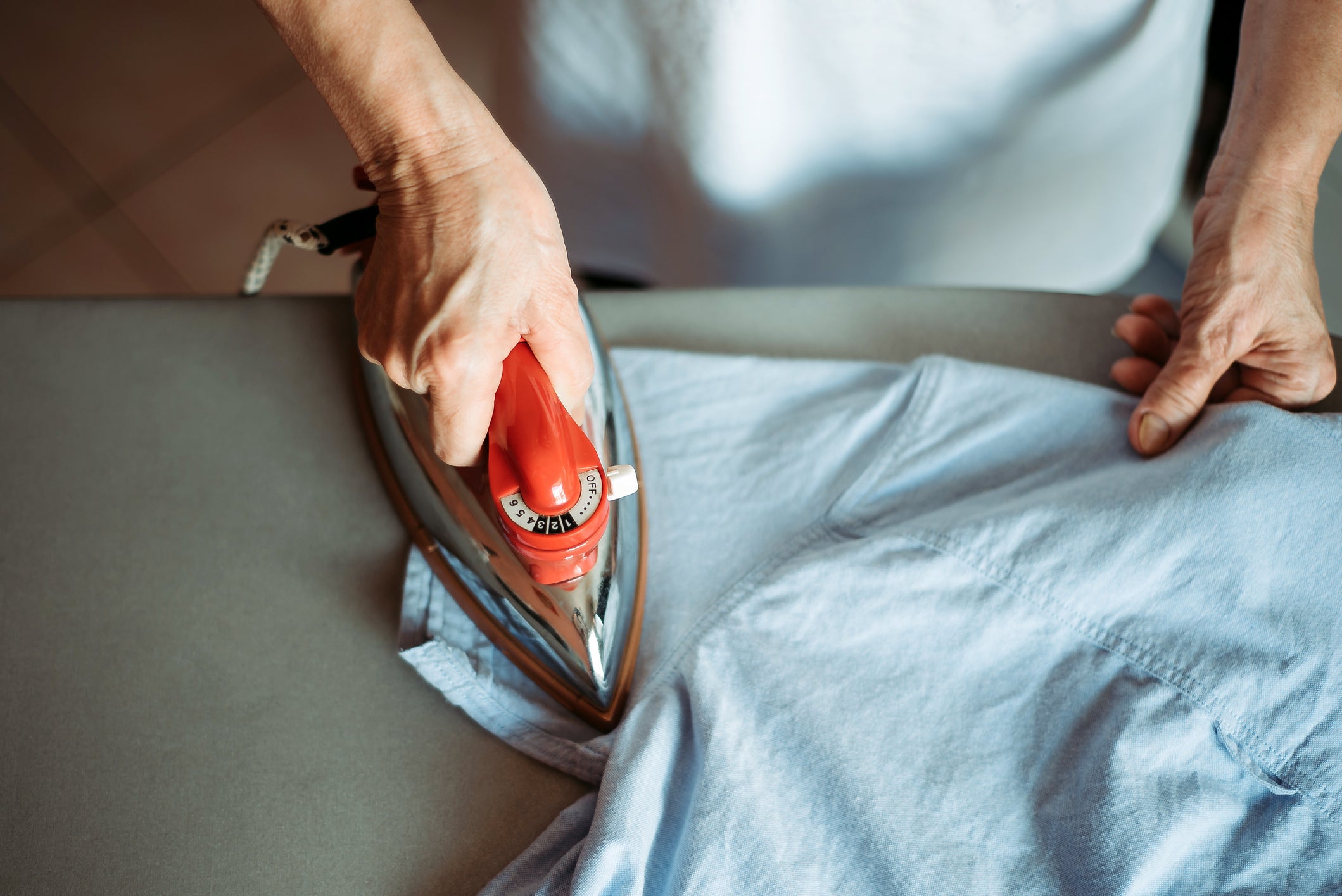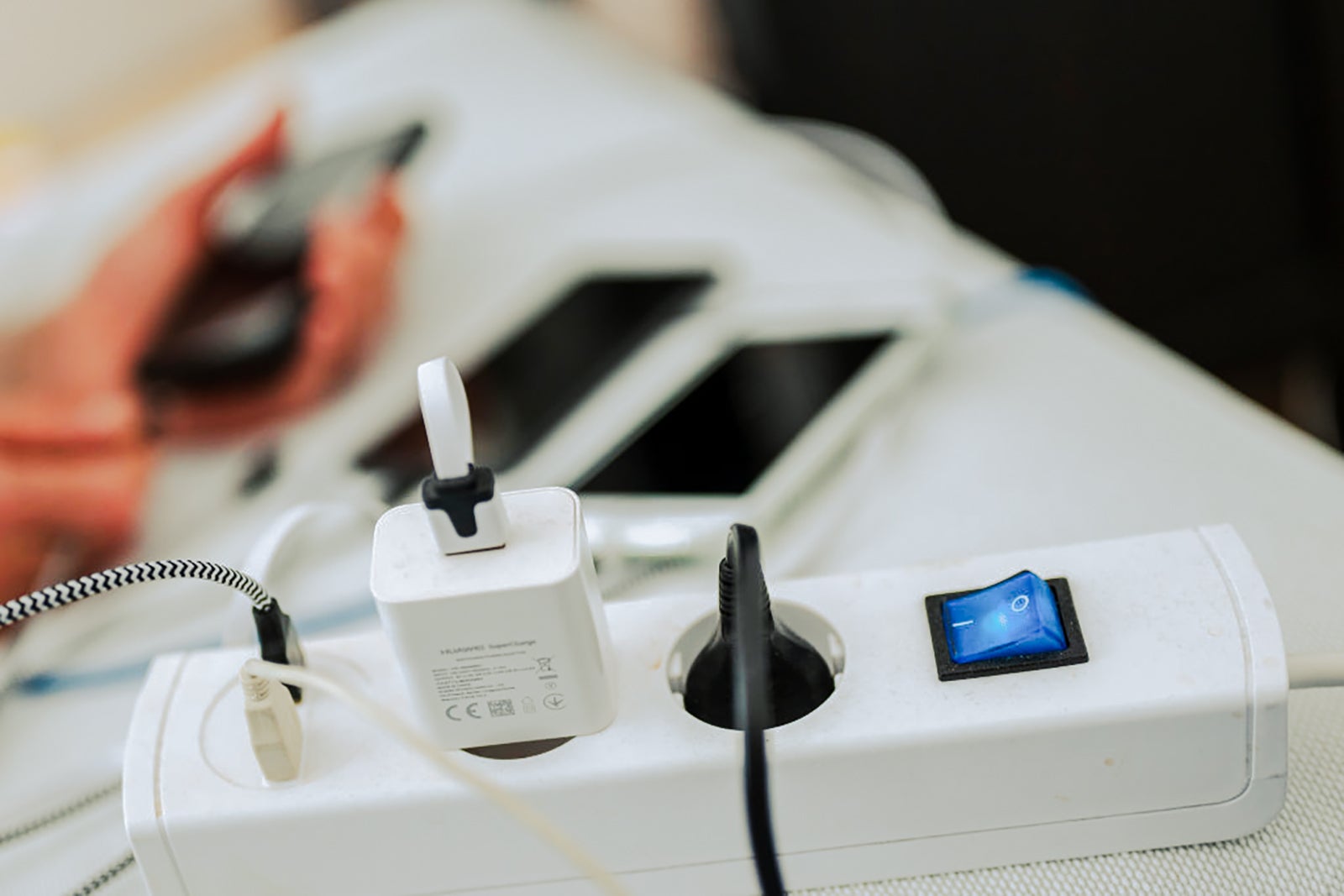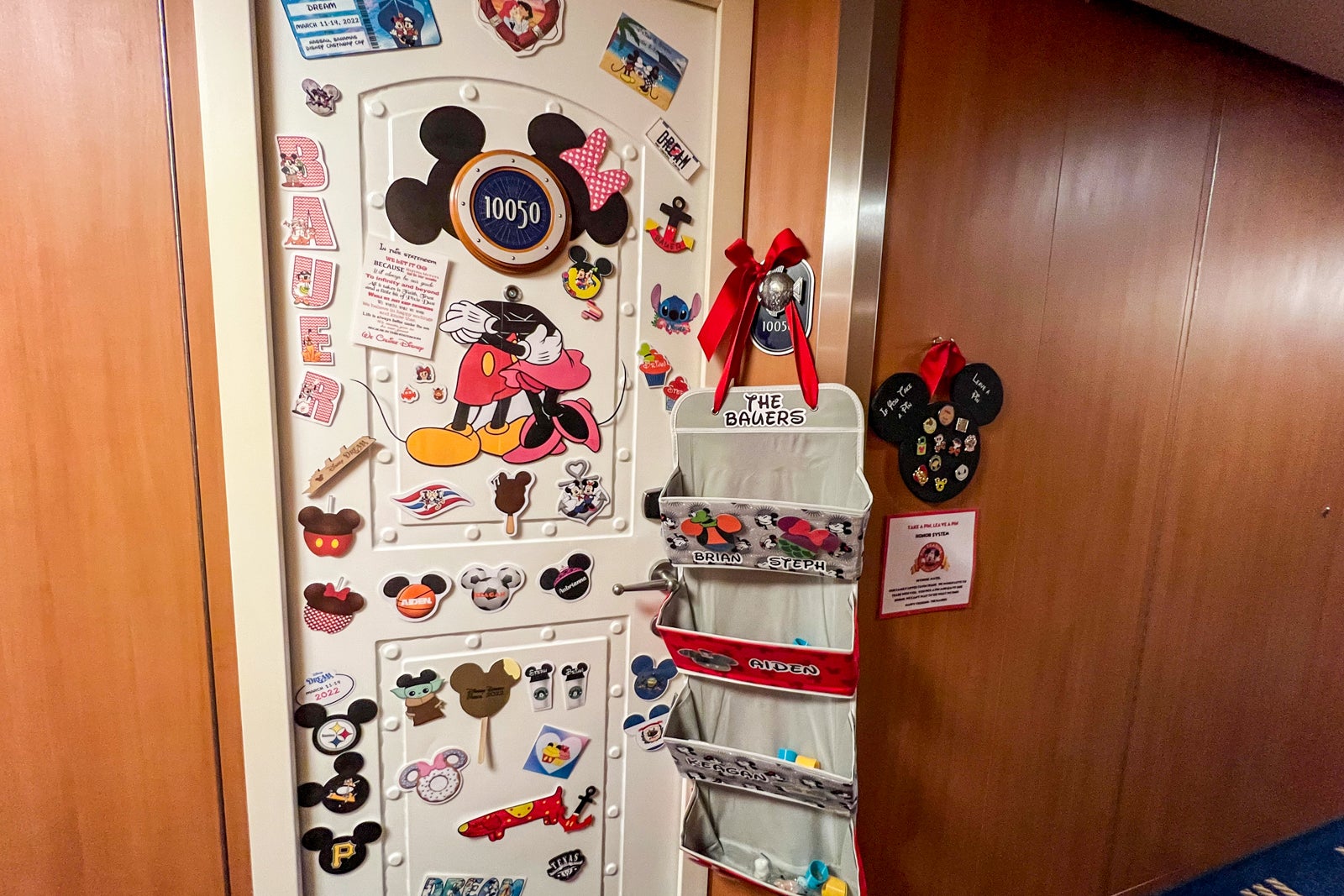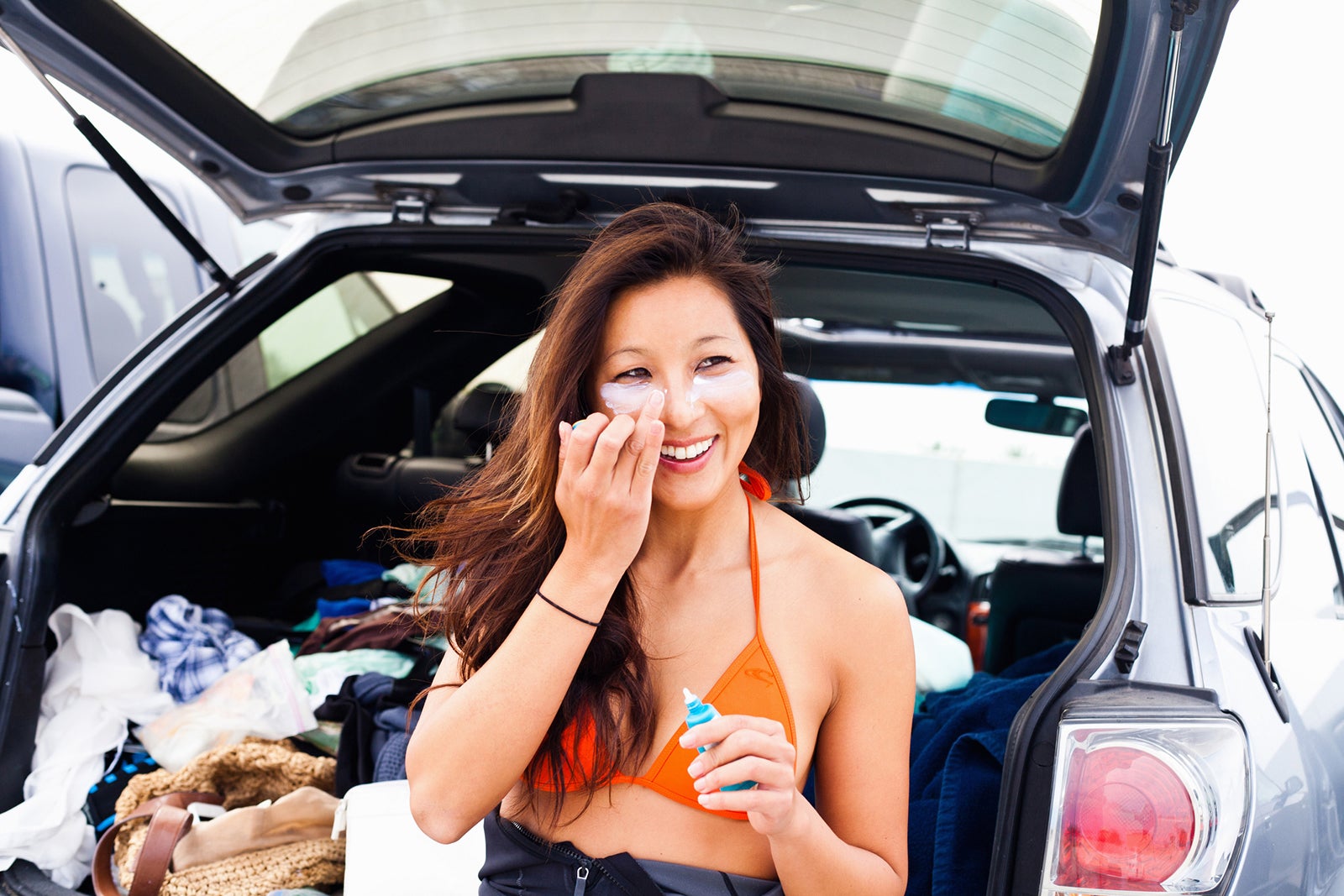Few events are more exciting than a cruise vacation. However, packing for a cruise can sometimes temper that enthusiasm — especially when you realize that items you’d like to bring are banned by the cruise lines.
What shouldn’t you pack for a cruise? Most cruise lines adhere to similar lists of prohibited items, found in their websites’ Help or FAQ sections. Be warned: Some lines ban items you might think would be acceptable to bring on board.
TPG has you covered. We’ve compiled a list of things not to bring on your cruise, whether universally prohibited or only allowed by specific cruise lines. Whether it’s your first or fiftieth cruise, it’s always good to check with your line to determine what to pack and what to leave at home.
Electrical appliances

Clothes irons and steamers
Your cruise ship is much like a floating resort. However, unlike in a hotel room, your cabin won’t have an iron for you to use. That’s not to say you should bring your own — quite the opposite. Irons and steamers are considered a fire hazard, so they’re banned from your room.
If wrinkled clothes stress you out, bring a small bottle of wrinkle-release spray. Or, check to see if your ship includes a public laundry room. Many do, and they include irons and boards for passengers to use. Also, washing, pressing and dry-cleaning services are usually available for a fee. If all else fails, hang your garments in the bathroom while you take a steamy shower.
Related: Everything you need to know about cruise ship laundry services
Coffeemakers and electric tea kettles
You can add electrical appliances like coffeemakers, electric tea kettles and the like to this list, too. Don’t worry: Your ship will provide plenty of places to satisfy your need for caffeine.
If you absolutely must make your own coffee, pack a small French press, and fill it with hot water from the buffet. Need a hot beverage in your room each morning? Order one from room service.
Sharp objects
Most cruise lines — such as Norwegian, Royal Caribbean and Holland America — ban scissors and knives with blades longer than 4 inches. Other lines, including Disney, prohibit knives regardless of blade length; this includes straight razors.
Safety razors for personal grooming are allowed on all lines, though.
CBD and marijuana
Each state in the United States individually interprets and enforces laws relating to CBD use. However, because of the ambiguity of the laws, most cruise lines ban CBD in any form.
Although several states have decriminalized the possession and use of marijuana, it’s still illegal under U.S. federal law. That means even if you can legally buy it in your home state for recreational or medical use, you can’t cruise with it.
Extension cords and surge-protected power strips

The design of most newer ships accommodates the need for ample electrical outlets and conveniently located USB ports in your cabin. If you’re sailing on an older ship, your cabin might be sparse in the outlet department.
If you’re tempted to bring a power strip with you, make sure it’s not a surge-protected strip. Those are banned on most cruise lines and will be confiscated.
Look instead for cruise-compliant power strips with extra plug receptacles and USB charging ports or a European plug adapter so you can use both the 110-volt and 220-volt outlets in your cabin.
Before you pack an extension cord, check with your cruise line. Some — like Carnival Cruise Line, MSC Cruises, Norwegian Cruise Line and Virgin Voyages — permit guests to use power cords in their cabins. Cunard, Royal Caribbean and Celebrity Cruises do not.
Medical equipment might be an exception to that rule, as stated in Cunard’s packing rules: “We also ask that you don’t bring extension cords with you, unless they are accompanying essential medical equipment, such as CPAP and nebulizer machines.”
Wi-Fi router
Most cruise lines let you use a one-device Wi-Fi plan across multiple devices; however, you can only log into one device at a time (or pay extra per device). Wi-Fi routers allow you to connect multiple devices to one internet connection, essentially avoiding that extra charge.
If you’re hoping to utilize that hack on your next cruise, you might need to reconsider. Recently, Royal Caribbean and Carnival have added routers or “internet-related equipment” to the list of prohibited items.
Related: Do cruise ships have Wi-Fi? A line-by-line guide to Internet access at sea
Baby monitors
If you have little ones and you’re sailing with Royal Caribbean, leave the baby monitor at home. The line also recently added them to the list of banned items.
Candles and incense
Safety is a priority on every cruise, and fire is the biggest threat to ship safety. So, it makes sense that candles or anything requiring the use of real fire would be banned for onboard use. Instead, consider battery-operated tea lights to set the mood.
Drones and kites
You might want that perfect aerial shot for Instagram from above the ship or at one of your ports of call. You’ll need to check with your cruise line first, though. Some ships allow them in your luggage, while all lines prohibit them from being flown from the ship.
The same rule largely applies to kites and other similar items meant to be flown. However, some ships ban those, too. For example, kites are included on Disney Cruise Line’s list of items that are “restricted for safety reasons and should not be brought on board.”
Guns
This might seem like a no-brainer. However, even firearm replicas — nonfiring guns, imitations, toys and their components — are prohibited aboard cruise ships. That includes water guns.
Some decorations

If you’re celebrating a special occasion or holiday, or you’re pumped about decorating your cabin door or room, proceed with caution. Items like party poppers and helium-filled balloons make most cruise lines’ lists of prohibited items.
Disney and Carnival say “no” to bringing balloons on board, while Royal Caribbean and MSC allow them.
Although balloons are absent from Norwegian’s list of prohibited items, the line eliminated cruise cabin door decorations in 2019, stating: “As per safety requirements, stateroom door decorations are strictly prohibited. Your stateroom steward has been instructed to remove and place all decorations inside the room.”
Related: Cruise ship embarkation day do’s and don’ts
Food
Couldn’t finish those loaded nachos you ordered from the hotel restaurant last night? Don’t even think about bringing them on board. The same goes for Meemaw’s homemade snickerdoodles, which you snacked on during your road trip to the cruise port.
Though each cruise line words its food prohibition differently, homemade or precooked foods are a no-no across the board. Passengers are permitted to bring prepackaged, unopened (in original packaging), nonperishable snacks, though. Take advantage of this exception to the rule to bring your kids’ favorite cookies, granola bars or fruit snacks or specialty items that accommodate your food allergy or special diet.
Make sure to finish that vanilla latte before you board, too. You can’t embark with an open or partially consumed beverage.
This rule shouldn’t cause concern; you will be fully sated during your vacation at sea. Honestly, if you can’t find enough to eat or drink on a cruise, you’re doing it wrong.
Bluetooth speakers
Carnival recently added “boom boxes, radios and all types of speakers (including Bluetooth, portable and wireless)” to its list of prohibited items. Previously, the line allowed passengers to use them in their cabins. The line cited safety reasons for the change, indicating that “public announcements must be heard by all guests and crew.”
Certain sunscreens

Certain sunscreens are banned, not by the cruise line, but by the ports they visit. Why? Although currently deemed safe for human use, sun-blocking ingredients like octinoxate, oxybenzone and octocrylene are damaging to fragile reef systems.
The chemicals play a part in reef bleaching, which is linked to warming sea temperatures. According to some researchers, the chemicals might also harm other kinds of marine life. Because of this, they’re banned from use in certain destinations, and using them could result in a fine of $1,000 or more.
If your cruise itinerary includes any of these destinations, choose your sunscreen carefully:
- Hawaii
- U.S. Virgin Islands
- Aruba
- Key West, Florida
- Bonaire
- Ecotourism reserves in Mexico (including natural water parks like Xcaret and Xel-Ha, as well as Cozumel’s Chankanaab Beach Adventure Park)
- Palau
There are plenty of reef-safe sunscreens out there. They are mineral-based products void of oxybenzone and octinoxate. Brands include Thinksport, Alba Botanica, Black Girl Sunscreen and Sun Bum.
Related: Did this cruise line actually ban Vaseline and my sunscreen?
Too much (and certain types of) alcohol
If you have a favorite vino or Champagne you’ve saved for a special occasion and want to bring it along, you certainly can on most cruise lines. However, you’ll find limits on how much and what kinds of alcohol you can take onto your cruise ship.
For example, Royal Caribbean permits one (750-milliliter) bottle of wine or Champagne per adult. Carnival allows one bottle of wine per adult. Disney Cruise Line OKs either two (750-milliliter) bottles of wine or six beers per stateroom.
If you bring more than the allotted amount indicated by your cruise line, it will be stored during your cruise. Depending on the cruise line, a crew member will return it to your cabin on your day of disembarkation, or you must pick it up at a designated area.
Note that your alcohol must be in your carry-on bag and not your checked luggage. Cruise staff will remove any alcohol in your checked luggage, and you won’t get it back. You’ll also not be compensated for it.
Bottles must be unopened and sealed. Some lines charge a corkage fee, which is usually $10 to $25 per bottle.
Keep your bottle of Woodford Reserve Kentucky bourbon at home, though. Most cruise lines don’t allow guests to bring hard liquor aboard. The alcohol will be seized, and you won’t get it back.
You might think you’re clever by trying to disguise your liquor by dumping it into an empty bottle of mouthwash. We don’t recommend it. If your contraband is discovered by security, it will likely be confiscated and discarded. Some cruise lines could even refuse to let you board.
If imbibing adult beverages during your cruise vacation is that important to you, just spring for the drink package.
Bottom line
When planning a cruise, curb the temptation to overpack. Some items you frequently travel with aren’t allowed in a cruise ship cabin.
Before you write out your packing list, check with your cruise line to confirm what is and isn’t allowed on board.
Planning a cruise? Start with these stories:
- The 5 most desirable cabin locations on any cruise ship
- A beginners guide to picking a cruise line
- The 8 worst cabin locations on any cruise ship
- The ultimate guide to what to pack for a cruise
- A quick guide to the most popular cruise lines
- 21 tips and tricks that will make your cruise go smoothly
- Top ways cruisers waste money
- The ultimate guide to choosing a cruise ship cabin
Few events are more exciting than a cruise vacation. However, packing for a cruise can sometimes temper that enthusiasm — especially when you realize that items you’d like to bring are banned by the cruise lines. What shouldn’t you pack for a cruise? Most cruise lines adhere to similar lists of prohibited items, found in …






![[removal.ai]_41709505-b305-44fd-97ff-5c381de50796-soccer-review-hub-1](http://soccerreviewhub.com/wp-content/uploads/2023/09/removal.ai_41709505-b305-44fd-97ff-5c381de50796-soccer-review-hub-1-1-e1694514490671.png)